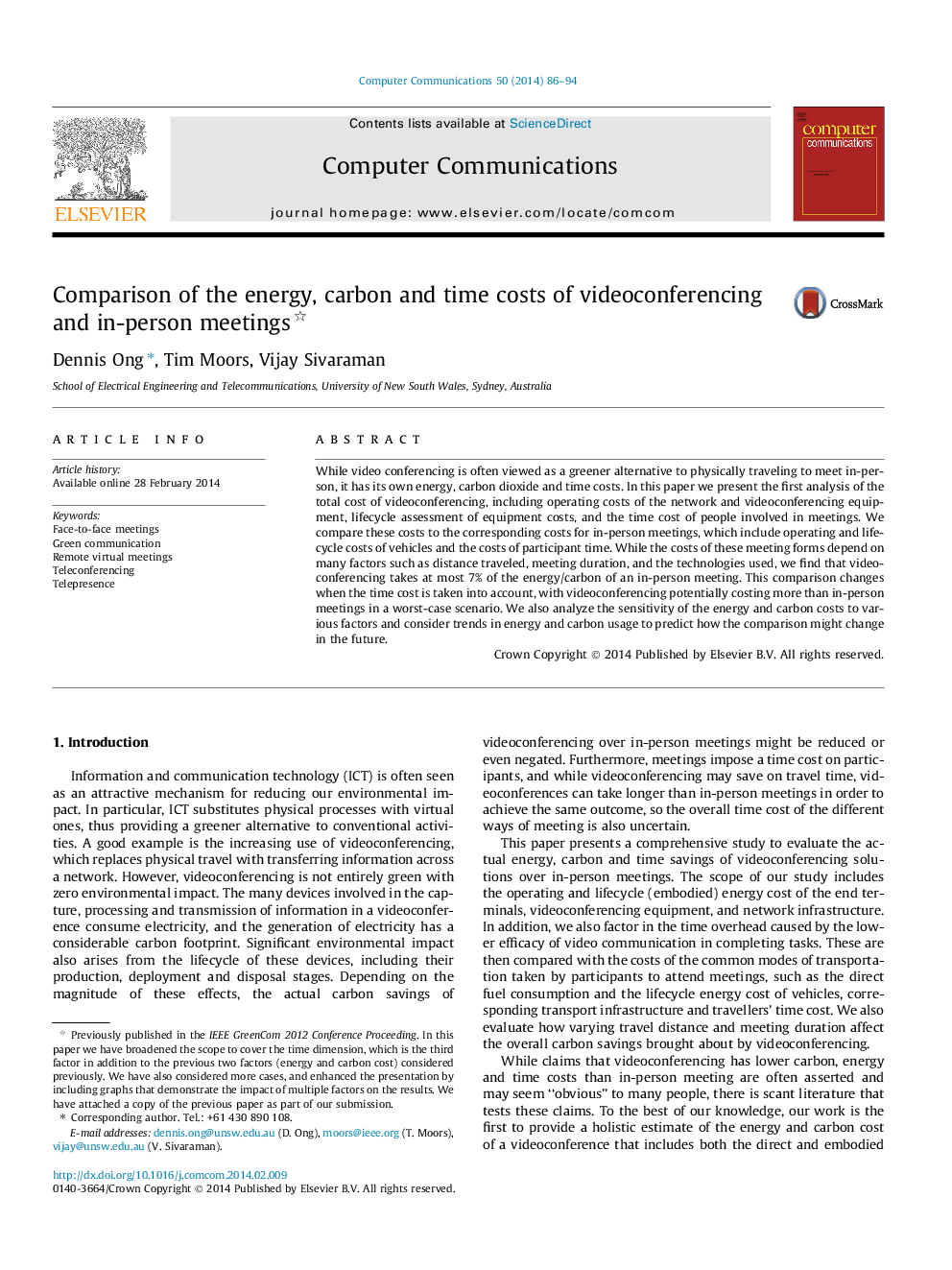| Article ID | Journal | Published Year | Pages | File Type |
|---|---|---|---|---|
| 448649 | Computer Communications | 2014 | 9 Pages |
While video conferencing is often viewed as a greener alternative to physically traveling to meet in-person, it has its own energy, carbon dioxide and time costs. In this paper we present the first analysis of the total cost of videoconferencing, including operating costs of the network and videoconferencing equipment, lifecycle assessment of equipment costs, and the time cost of people involved in meetings. We compare these costs to the corresponding costs for in-person meetings, which include operating and lifecycle costs of vehicles and the costs of participant time. While the costs of these meeting forms depend on many factors such as distance traveled, meeting duration, and the technologies used, we find that videoconferencing takes at most 7% of the energy/carbon of an in-person meeting. This comparison changes when the time cost is taken into account, with videoconferencing potentially costing more than in-person meetings in a worst-case scenario. We also analyze the sensitivity of the energy and carbon costs to various factors and consider trends in energy and carbon usage to predict how the comparison might change in the future.
